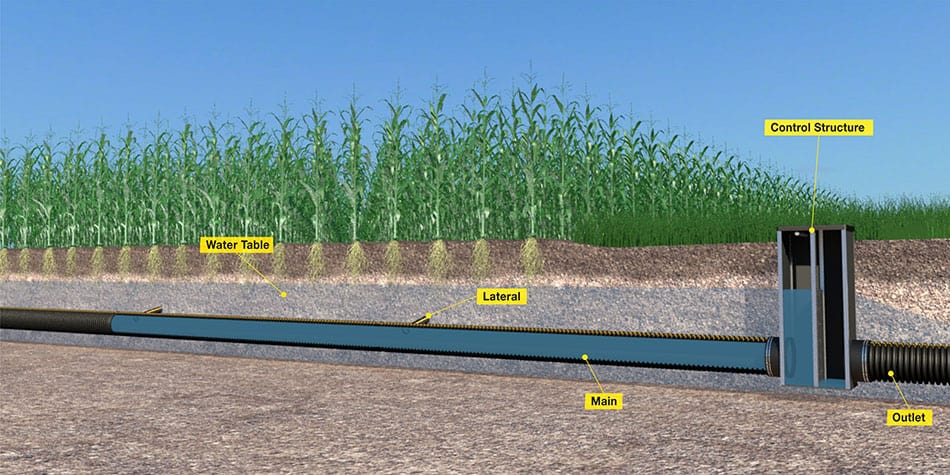
Controlled Drainage
Practice Overview
Water Control Structures and water gate valves manage the water table across a field relative to root depth throughout the year. Drainage still occurs, but this gives the farmer control over another resource on their landscape, water.
Benefits
- Reduced nutrient loss (30%)
- Increased yields (5-10%)
- More drought-resilient crops
How It Works
Water control structures are placed on a contoured drainage system to “dam up” the water and raise the water table to an ideal level, depending on the growth stage of the crop. Stop-gates in the structures can be adjusted throughout the year so the water can be close to the root level (18” to 36”). During dry periods, water is retained in the soil profile. This reduces the overall drainage volume, thus reducing the overall amount of nutrients leaving the land.
Throughout the year, stoplogs can be adjusted according to crop stage and field operations:
Spring
Stoplogs removed to allow trafficability in the field. Allow 2-weeks of free drainage to reduce water table. After planting, they’re placed back in to raise water table near root level
Summer
As roots extend down, water table level can be lowered to promote deeper root growth. Stoplogs can also be left in place through late summer to retain soil moisture during dry periods.
Fall
Stoplogs removed to allow for trafficability during harvest and tillage.
Winter
In southern climates, stoplogs can be set in place after harvest to raise water table to limit unnecessary drainage and fall-applied fertilizer leaching. In far-north, colder climates, stoplogs can be removed to prevent a hard freeze in the structure.
Installation Considerations
- Most effective in flat fields
- Structures/Watergates typically can handle up to 2’ of elevation difference
- Best on a contoured drainage system to take advantage of the lay of the land
Costs
- Installation: $50/acre greater than conventional drainage system
- $3.50/lb of N removed for new system
- $0.78/lb of N removed for retrofitted system